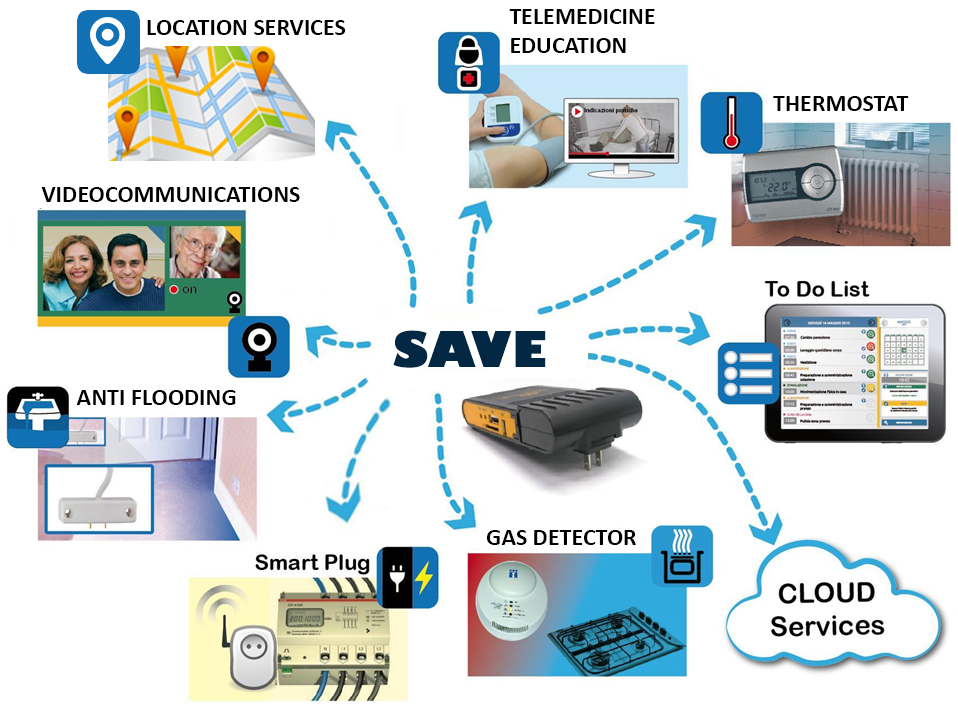SAVE will provide a “top-down” approach of: 1) location and identity (using Location-Based Services and Location [from] Identity Separation Protocols); 2) role-driven (the capabilities are growing from the end-user to the volunteer, to the family member, to professional caregiver and even to the IT specialist); 3) safety of the person is integrated with the safety of the vicinity – compliant with the integrated (merged) emergency alerting (medical, police, fire etc) available in many countries (smart mediation would enhance alerts treatment and would discriminate real SOS from pre-filtered ”spam”); 4) well-being is supported by monitoring of the physical condition (with wearable devices) integrated with stimulation of physical exercise; 5) “to-do” lists are shared with the trusted group of “friends & family” and forgotten tasks are reminded / updated-enhanced in the supervised care-giving community; 6) the elderly-people target group is extended with different kinds of other end-users (with mild dementia and other impairments or disabilities).
Objectives
“SAVE” is dedicated to the elderly persons, suffering (or at risk of) age-related chronic illnesses and/or mild cognitive issues/disabilities. For these, and a range of “not-so-fit” persons, “SAVE” aims to avoid psychosocial exclusion by “restoring the referential”. The unique goal of “orientation” in a supportive environment – in terms of position-location and/or in terms of safety (in sensor-equipped intelligent houses) is also approached in a broader cognitive and behavioural sense, task-oriented in the “personal cloud” of relatives, friends and caregivers.
Expected results and impact
Living an active and meaningful life, independently and safely for longer time at home and in the vicinity. The service models would impact the intelligent environment, the physical activities and wellbeing, as well as caregivers’ perceptiveness on their social involvement. The ethical aspects would be tackled by exploiting modern and secure technologies, humanizing the care relationship. The business model (infrastructure, training and distribution network – at the end of the three years project) would address part of the 10 millions elderly E.U. people suffering from mild cognitive impairment and related issues.

